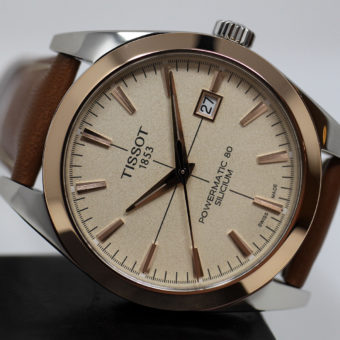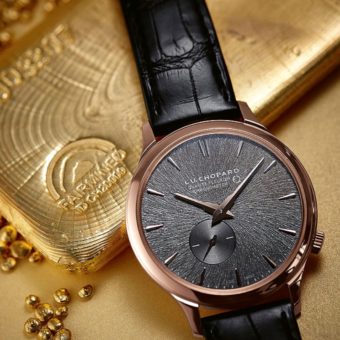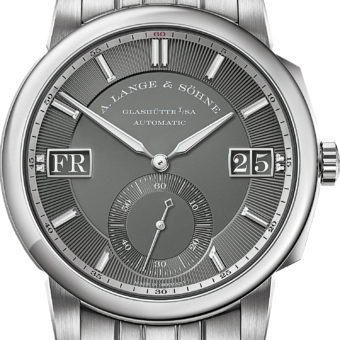
Switzerland has responded to the sudden death of Swatch Group Chairman Nicolas G. Hayek on June 28 with a rare outpouring of grief, praise, and appreciation. Hayek, 82, was born in Beirut, Lebanon, but grew up in Switzerland and spent his entire professional life there. Hayek has been a prominent public figure in the country for four decades and one of the country’s most famous and, ultimately, beloved figures.

He founded a consulting company, Hayek Engineering Inc., in Zurich in 1965 and quickly became Switzerland’s most important consultant, the Mr. Fixit that both industry and the Swiss government called on to develop strategies to fix seemingly unfixable problems. Mr. Fixit became Mr. Swatch in the 1980s when the Swiss banks called on him to develop a plan to rescue the struggling Swiss watch industry.
The watch industry was dominated in those days by two giant groups, ASUAG and SSIH, both of which were hemorrhaging red ink, surviving on bank bailouts. Hayek submitted a detailed reorganization and recovery plan, which merged the two groups into a single group called SMH (Swiss Microelectronics and Horology); the name later was changed to the Swatch Group. The banks not only approved Hayek’s plan, they pressed him to execute the plan as chairman and CEO of the new group. The banks agreed to sell shares in the new and unproven company at extremely favorable rates to Hayek and a group of investors formed by him in order to get the new company on its feet. Through what is known as “the Hayek pool,” Hayek controlled these shares, which amount today to 41% of Swatch Group shares. The arrangement gave some financial stability to the new company and gave Hayek the control he needed to run it. In time, as the Swatch Group prospered, it made him a multi-billionaire.
Mr. Hayek at a 2009 Baselworld press conference announcing the Breguet at the Louvre exhibition.

SMH was launched in 1985. Its first great success was Swatch, the plastic analog watch that had been introduced two years before and sold for around $35. ETA had created Swatch in the early 1980s but could not get the money to finance it. Hayek, while working on his rescue plan, backed the project and got the banks to finance it. Swatch showed that Switzerland could master quartz technology and helped secure Switzerland’s industrial base. It was produced by ETA, SMH’s movement-making subsidiary in Grenchen, Switzerland. Swatch became a design icon. It also made Hayek famous in business circles as the man who competed with Japan’s electronic juggernaut and won. Hayek argued that Swatch was proof that Western countries could and should maintain their manufacturing bases, that it was possible for a high-wage country to produce high value, high quality, high volume consumer products at low cost. Swatch’s enormous sales success returned SMH to profitability.
A collection of Swatch watches.

In the 1990s, Hayek and his team turned their attention to restoring the fortunes of other group brands, particularly Omega. Today Omega is the second-best-selling Swiss watch after Rolex.
Hayek at a press conference flanked by former astronauts.

In 1999, Hayek acquired the Breguet brand and the Nouvelle Lemania factory from Investcorp. In a surprise move, Hayek named himself CEO of Breguet. Over the course of the last decade, he has orchestrated a stunning revival of Breguet’s fortunes. Breguet had annual sales of 30 million Swiss francs when the Swatch Group acquired it. By 2003, annual sales had soared to SF200 million. As for the Swatch Group, in the course of his 24-year reign as its head, sales rose to a high of SF5.97 billion in the record year of 2008.
Swatch Group extremes: below left with Breguet Marie-Antoinette No. 1160, and right with a Swatch plastic chronograph from the 007 Villains collection.

Hayek, ultra-intelligent, ultra-passionate, ultra-opinionated, was an outspoken and often controversial figure in Swiss political, economic and cultural life. He was a frequent and caustic critic of Swiss banks and a booster of causes like the environment. (He entered a joint venture with Mercedes-Benz in 1994 to develop an environmentally friendly city car, the Swatchmobile. Ultimately the Swatch Group pulled out of the project, but Hayek’s idea came to fruition as today’s Smart car, launched by Mercedes in 1997. Smart stands for Swatch Mercedes Art car.)
Internationally, he was an outspoken defender of his adopted country, an articulate ambassador promoting core Swiss values of uniqueness, neutrality and fairness, and manufacturing expertise. His death was huge news in Switzerland. Swiss President Doris Leuthard remarked, “We owe Mr. Hayek a lot.” Several Swiss papers devoted their entire front pages to Hayek, according to swissinfo.ch, a Web site devoted to Swiss news. Geneva-based Le Temps spent its first three pages on Hayek’s death and eventful life. In an editorial, Le Temps said Hayek “entered into the history books, among the greatest entrepreneurs of the 20th century. He who would become the emperor of the Swatch Group was primarily its messiah, then the entrepreneur who succeeded in restructuring what everyone thought was a lost cause. He renewed the mechanical tradition, re-established the supremacy of Omega, made Breguet rise again from the ashes, opened prestigious boutiques. The defeats of the watch industry were forgotten. The conquest of the world continued. It would never stop.”
A headline in Blick, a Swiss tabloid, said, “Thanks for Swatch! Thanks for Smart! Thanks for everything!” Said Blick, “Yesterday the greatest entrepreneur of Switzerland died, one of the most impressive personalities this country has ever known.”
Hayek’s death was also news internationally. Major newspapers like The New York Times, Financial Times, and Wall Street Journal ran obituaries. Johann Rupert, executive chairman of the Richemont Group, issued a tribute. “Nicolas Hayek’s death is an immense loss for Switzerland and for the watch industry,” Rupert said. “He was the driving force behind Swiss watchmaking; its leader and its savior. Our industry has lost one of its champions, respected by everyone who dealt with him; a man of honor, gravitas and great personal charm. He was a true leader and entrepreneur and an inspiration to me.”






